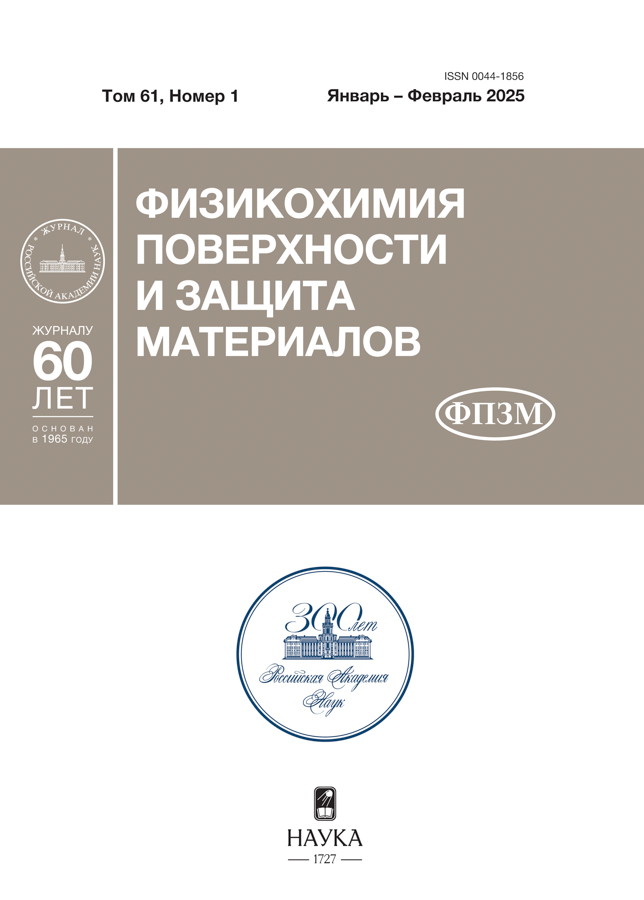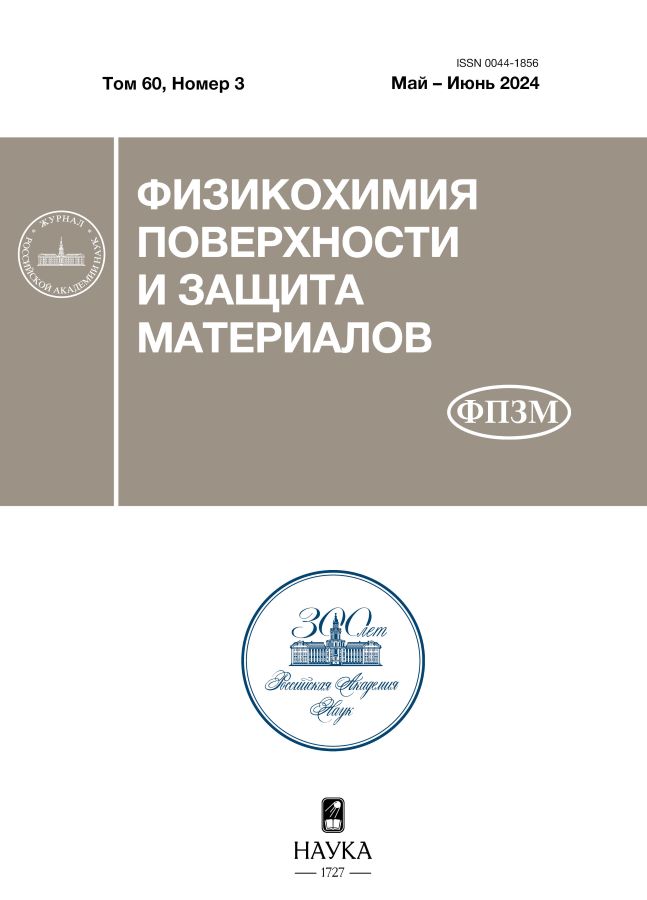Квантово-химическое моделирование оптических и физико-химических свойств дифильных спиропиранов
- Авторы: Селивантьев Ю.М.1,2, Морозов А.Н.1, Зайченко Н.Л.3, Любимов А.В.3, Райтман О.А.2
-
Учреждения:
- РХТУ им. Д.И. Менделеева
- ИФХЭ РАН
- ФИЦ ХФ РАН
- Выпуск: Том 60, № 3 (2024)
- Страницы: 298-313
- Раздел: НОВЫЕ ВЕЩЕСТВА, МАТЕРИАЛЫ И ПОКРЫТИЯ
- URL: https://jdigitaldiagnostics.com/0044-1856/article/view/663882
- DOI: https://doi.org/10.31857/S0044185624030097
- EDN: https://elibrary.ru/MDRRMS
- ID: 663882
Цитировать
Полный текст
Аннотация
Метод TD-DFT впервые применен для расчета электронных переходов дифильных спиросоединений. Показано, что он дает принципиально верное распределение электронной плотности, соответствующее результатам, полученным с помощью метода CASSCF, и позволяет предсказать природу электронного перехода мероцианиновой формы. Для отрицательных фотохромов обнаружена возможность существования конических пересечений поверхностей потенциальной энергии основного и возбужденного электронных состояний, что может являться причиной замедленного фотохромизма данных соединений. Показана принципиальная возможность использования TD-DFT для предсказания оптических характеристик длинноцепочечных спиропиранов при условии использования шкалирующих регрессий. Впервые разработаны линейные регрессии для таких соединений, учитывающие набор физических параметров растворителя в явном виде. Это позволило получить унифицированную эмпирическую корректировку, учитывающую сольватохромный эффект. Полученные результаты могут быть использованы в качестве основы для разработки базового концепта, учитывающего влияние растворителя на спектральные свойства спиросоединений, и построения единой регрессионной модели, охватывающей различные проявления сольвато- и фотохромизма.
Ключевые слова
Полный текст
Об авторах
Ю. М. Селивантьев
РХТУ им. Д.И. Менделеева; ИФХЭ РАН
Email: raitman.o.a@muctr.ru
Россия, Москва, Миусская пл. 9; Москва, Ленинский просп., 31, к. 4
А. Н. Морозов
РХТУ им. Д.И. Менделеева
Email: raitman.o.a@muctr.ru
Россия, Москва, Миусская пл. 9
Н. Л. Зайченко
ФИЦ ХФ РАН
Email: raitman.o.a@muctr.ru
Россия, Москва, ул. Косыгина, 4
А. В. Любимов
ФИЦ ХФ РАН
Email: raitman.o.a@muctr.ru
Россия, Москва, ул. Косыгина, 4
О. А. Райтман
ИФХЭ РАН
Автор, ответственный за переписку.
Email: raitman.o.a@muctr.ru
Россия, Москва, Ленинский просп., 31, к. 4
Список литературы
- Matsumoto T., Kawai T., Yokoyama T. Supramolecular Chemistry on Solid Surfaces. 2003. P. 107–121.
- Sasikala V., Chitra K. All optical switching and associated technologies: a review // Journal of Optics. 2018. Vol. 47. № 3. P. 307–317.
- Ferreira de Lima T. et al. Progress in neuromorphic photonics // Nanophotonics. 2017. Vol. 6, № 3. P. 577–599.
- Davis T.J., Gómez D.E., Roberts A. Plasmonic circuits for manipulating optical information // Nanophotonics. 2016. Vol. 6. № 3. P. 543–559.
- V. S. Design of Efficient All Optical Switching Encoder Using XOR gate based on SOA Non Linearity // 13th International Conference on Fiber Optics and Photonics. Washington, D.C.: OSA, 2016. P. Th3A.27.
- Chen X. et al. Reconfigurable All-Optical Logic Gates Using Single Semiconductor Optical Amplifier at 100-Gb/s // IEEE Photonics Technology Letters. 2016. Vol. 28. № 21. P. 2463–2466.
- Parihar A. et al. Computing with dynamical systems based on insulator-metal-transition oscillators // Nanophotonics. 2017. Vol. 6. № 3. P. 601–611.
- Pirzadi M., Mir A., Bodaghi D. Realization of Ultra-Accurate and Compact All-Optical Photonic Crystal OR Logic Gate // IEEE Photonics Technology Letters. 2016. V. 28, № 21. P. 2387–2390.
- Djordjevic I.B. Integrated Optics Modules Based Proposal for Quantum Information Processing, Teleportation, QKD, and Quantum Error Correction Employing Photon Angular Momentum // IEEE Photonics J. 2016. V. 8, № 1. P. 1–12.
- Singh P. et al. All-Optical Logic Gates: Designs, Classification, and Comparison // Advances in Optical Technologies. 2014. V. 2014. P. 1–13.
- Li P. et al. Low-Complexity TOAD-Based All-Optical Sampling Gate With Ultralow Switching Energy and High Linearity // IEEE Photonics J. 2015. V. 7, № 4. P. 1–8.
- Fushimi A., Tanabe T. Robustness of scalable all-optical logic gates // CLEO: 2014. Washington, D.C.: OSA, 2014. P. JTu4A.93.
- Dhanabalan A. et al. Langmuir films from tailor-made semi-amphiphilic alternating (AB) heterocyclic copolymers // Colloids Surf. A Physicochem. Eng. Asp. 2002. V. 198–200. P. 331–338.
- Ulmann A. An introduction to ultrathin organic films. 1991.
- Sánchez-Obrero G. et al. Surface Protection of Quaternary Gold Alloys by Thiol Self-Assembled Monolayers // Int. J. Mol. Sci. 2022. V. 23. № 22. P. 14132.
- Korrapati V. K. et al. Self-assembled layers for the temporary corrosion protection of magnesium-AZ31 alloy // Corros. Sci. 2020. V. 169. P. 108619.
- Taneja P. et al. Heavy Metal Ion Sensing Using Ultrathin Langmuir–Schaefer Film of Tetraphenylporphyrin Molecule // IEEE Sens. J. 2020. V. 20. № 7. P. 3442–3451.
- Mannini M. Molecular Magnetic Materials on Solid Surfaces. Firenze: Firenze University Press, 2009. V. 4.
- Bodik M. et al. Langmuir films of low-dimensional nanomaterials // Adv. Colloid Interface Sci. 2020. V. 283. P. 102239.
- Mohanty S.K., Tolochko O. An atom probe analysis of self-assembled monolayers: A novel approach to investigate mixed and unmixed self-assembled monolayers (SAMs) on gold // Appl. Surf. Sci. 2019. V. 494. P. 152–161.
- Resch R., Koel B.E. Surfaces and Films // AIP Physics Desk Reference. New York, NY: Springer New York, 2003. P. 756–790.
- Gan W., Xu B., Dai H.-L. Super Bright Luminescent Metallic Nanoparticles // J. Phys. Chem. Lett. 2018. V. 9, № 15. P. 4155–4159.
- Gankin A. et al. Molecular and Ionic Dipole Effects on the Electronic Properties of Si-/SiO 2 -Grafted Alkylamine Monolayers // ACS Appl. Mater. Interfaces. 2017. V. 9. № 51. P. 44873–44879.
- Minkin V.I. Photoswitchable Molecular Systems Based on Spiropyrans and Spirooxazines // Molecular Switches. Wiley, 2011. P. 37–80.
- Yee L.H. et al. Photochromic Spirooxazines Functionalized with Oligomers: Investigation of Core−Oligomer Interactions and Photomerocyanine Isomer Interconversion Using NMR Spectroscopy and DFT // J. Org. Chem. 2010. V. 75, № 9. P. 2851–2860.
- Del Canto E. et al. Functionalization of single-walled carbon nanotubes with optically switchable spiropyrans // Carbon N Y. 2010. V. 48. № 10. P. 2815–2824.
- Klajn R., Stoddart J.F., Grzybowski B.A. Nanoparticles functionalised with reversible molecular and supramolecular switches // Chem. Soc. Rev. 2010. V. 39. № 6. P. 2203.
- Seefeldt B. et al. Spiropyrans as molecular optical switches // Photochemical & Photobiological Sciences. 2010. V. 9, № 2. P. 213–220.
- Shao N. et al. Spiropyran-based optical approaches for mercury ion sensing: Improving sensitivity and selectivity via cooperative ligation interactions using cysteine // 2009. V. 655, № 1–2. P. 1–7.
- Zakharova M.I. et al. Thermodynamic and kinetic analysis of metal ion complexation by photochromic spiropyrans // Russian Chemical Bulletin. 2009. V. 58. № 7. P. 1329–1337.
- Minkin V.I. et al. Chemosensors with crown ether based receptors // Arkivoc. 2008. V. 2008, № 4. P. 90–102.
- Minkin V.I. Bistable organic, organometallic, and coordination compounds for molecular electronics and spintronics // Russian Chemical Bulletin. 2008. Vol. 57. № 4. P. 687–717.
- Korolev V. V. et al. Spironaphtoxazines produced from crown-containing dihydroisoquinolines: Synthesis and spectroscopic study of cation-dependent photochromism // J. Photochem. Photobiol. A Chem. 2007. V. 192. № 2–3. P. 75–83.
- Tomasulo M., Yildiz I., Raymo F.M. Nanoparticle-induced transition from positive to negative photochromism // Inorganica Chim. Acta. 2007. V. 360, № 3. P. 938–944.
- Zhou W. et al. Photoisomerization of Spiropyran for Driving a Molecular Shuttle // Org. Lett. 2007. V. 9, № 20. P. 3929–3932.
- Laurent A.D., Adamo C., Jacquemin D. Dye chemistry with time-dependent density functional theory // Phys. Chem. Chem. Phys. 2014. V. 16. № 28. P. 14334–14356.
- Rostovtseva I.A. et al. Experimental and theoretical insight into the complexation behavior of spironaphthopyrans bearing o- positioning benzazole moiety // J. Mol. Struct. 2017. V. 1145. P. 55–64.
- Liu X. et al. Theoretical investigation and reconsideration of intramolecular proton-transfer-induced the twisted charge-transfer for the fluorescent sensor to detect the aluminum ion // Struct. Chem. 2022. V. 33, № 4. P. 1355–1364.
- Chernyshev A. V. et al. Spectroscopic, photochromic and kinetic properties of 5’-benzothiazolyl derivatives of spiroindolinenaphthopyrans: An experimental and theoretical study // Dyes and Pigments. 2014. V. 111. P. 108–115.
- Wen G. et al. Photomodulation of the electrode potential of a photochromic spiropyran-modified Au electrode in the presence of Zn2+: a new molecular switch based on the electronic transduction of the optical signals // Chemical Communications. 2006. № 28. P. 3016.
- Finnerty J.J., Koch R. Accurate Calculated Optical Properties of Substituted Quaterphenylene Nanofibers // J. Phys. Chem. A. 2010. V. 114, № 1. P. 474–480.
- Fabian J. TDDFT-calculations of Vis/NIR absorbing compounds // Dyes and Pigments. 2010. V. 84. № 1. P. 36–53.
- Guillaume M., Champagne B., Zutterman F. Investigation of the UV/Visible Absorption Spectra of Merocyanine Dyes Using Time-Dependent Density Functional Theory // J. Phys. Chem. A. 2006. V. 110. № 48. P. 13007–13013.
- Lenoble C., Becker R.S. Photophysics, photochemistry, kinetics, and mechanism of the photochromism of 6’-nitroindolinospiropyran // J. Phys. Chem. 1986. V. 90. № 1. P. 62–65.
- Cottone G., Noto R., La Manna G. Theoretical study of spiropyran–merocyanine thermal isomerization // Chem. Phys. Lett. 2004. V. 388. № 1–3. P. 218–222.
- Balasubramanian G. et al. Structural and thermochemical properties of a photoresponsive spiropyran and merocyanine pair: Basis set and solvent dependence in density functional predictions // Chem. Phys. Lett. 2012. V. 554. P. 60–66.
- Tomioka H., Murata S., Inagaki F. Photochromic properties of water-soluble spiropyrans in reversed micelles. // Journal of Photopolymer Science and Technology. 1989. V. 2. № 2. P. 143–146.
- Shimizu I., Kokado H., Inoue E. Photoreversible Photographic Systems. VI. Reverse Photochromism of 1,3,3-Trimethylspiro[indoline-2,2′-benzopyran]-8′-carboxylic Acid // Bull. Chem. Soc. Jpn. 1969. V. 42. № 6. P. 1730–1734.
- Gruda I., Leblanc R.M. Synthesis of some long-chain spiropyranindolines // Can. J. Chem. 1976. V. 54, № 4. P. 576–580.
- Stephens P.J. et al. Ab Initio Calculation of Vibrational Absorption and Circular Dichroism Spectra Using Density Functional Force Fields // J. Phys. Chem. 1994. V. 98. № 45. P. 11623–11627.
- Weigend F., Ahlrichs R. Balanced basis sets of split valence, triple zeta valence and quadruple zeta valence quality for H to Rn: Design and assessment of accuracy // Physical Chemistry Chemical Physics. 2005. V. 7. № 18. P. 3297.
- Weigend F. Accurate Coulomb-fitting basis sets for H to Rn // Physical Chemistry Chemical Physics. 2006. V. 8. № 9. P. 1057.
- Barone V., Cossi M. Quantum Calculation of Molecular Energies and Energy Gradients in Solution by a Conductor Solvent Model // J. Phys. Chem. A. 1998. V. 102. № 11. P. 1995–2001.
- Neese F. The ORCA program system // WIREs Computational Molecular Science. 2012. V. 2. № 1. P. 73–78.
- Neese F. Software update: the ORCA program system, version 4.0 // WIREs Computational Molecular Science. 2018. V. 8. № 1.
- Aldoshin S.M. Spiropyrans: structural features and photochemical properties // Russian Chemical Reviews. 1990. V. 59. № 7. P. 663–684.
- Koryako N.E. et al. Negative Photochromism and Luminescent Properties of Amphiphilic Spiropyran in Solutions and at the Interface // Protection of Metals and Physical Chemistry of Surfaces. 2019. V. 55. № 6. P. 1118–1123.
Дополнительные файлы


















